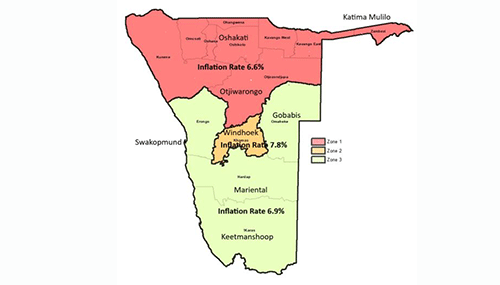As the basic cost of living continues to increase unabated, Khomas is considered the region in the country where consumers feel the pinch of escalating prices the most.
This is as the annual inflation rate for September 2022 in the Khomas region increased by 7.8%, compared to 3.1%, recorded during the same period in 2021.
A concerned Windhoek resident, Tabitha Kandjii, said these are indeed trying times in the capital city: “You can walk into a shop with N$500 and come out unsatisfied with only two plastic bags. We are in trouble! This is time to consider and differentiate needs from wants at our households”.
She added the escalating financial burden is “not a joke”, as it often leads to depression and many wrongdoings, such as corruption and crime in the city.
According to the Namibia Statistics Agency (NSA), the inflationary increase was mainly reflected in the price levels of transport from 6.3% to 19.8%, furnishing, household equipment and routine maintenance of the house from 4.5% to 18.4%, hotels, cafés and restaurants from -1.2% to 14.8%, while recreation and culture increased from 2.9% to 8.7%.
During September 2022, Namibia’s annual inflation rate was estimated at 7.1%, compared to 3.5% recorded in September 2021.
On a monthly basis, the inflation rate stood at 0.1%, compared to 0.3% registered the previous month.
Meanwhile, the FNB house price index report for the second quarter showed central house price index growth moderated downwards over the last 12 months to 3.5% at the end of June 2022, compared to 5.9% recorded over the same period of 2021.
“Indeed, this was reflected through a drastic decline in the overall central volume index growth, which reached a 12-month average of -17.6% at the end of June 2022 from an astounding growth of 40.6% recorded a year earlier. The luxury housing segment was the main driver for the slowdown in the overall house price index growth in this region, recording the deepest contraction of 68.5% year-on-year from an all-time growth figure of 209.1% seen over the corresponding period of 2021,” reads the report.
It added the 12-month average house price in Windhoek came in at N$1 292 000 down by 1.6% year-on-year, while Okahandja and Gobabis saw average house prices of N$931 000 and N$680 000, reflecting growth and contraction of 10.4% and -7% year on year, respectively.
– mndjavera@nepc.com.na


